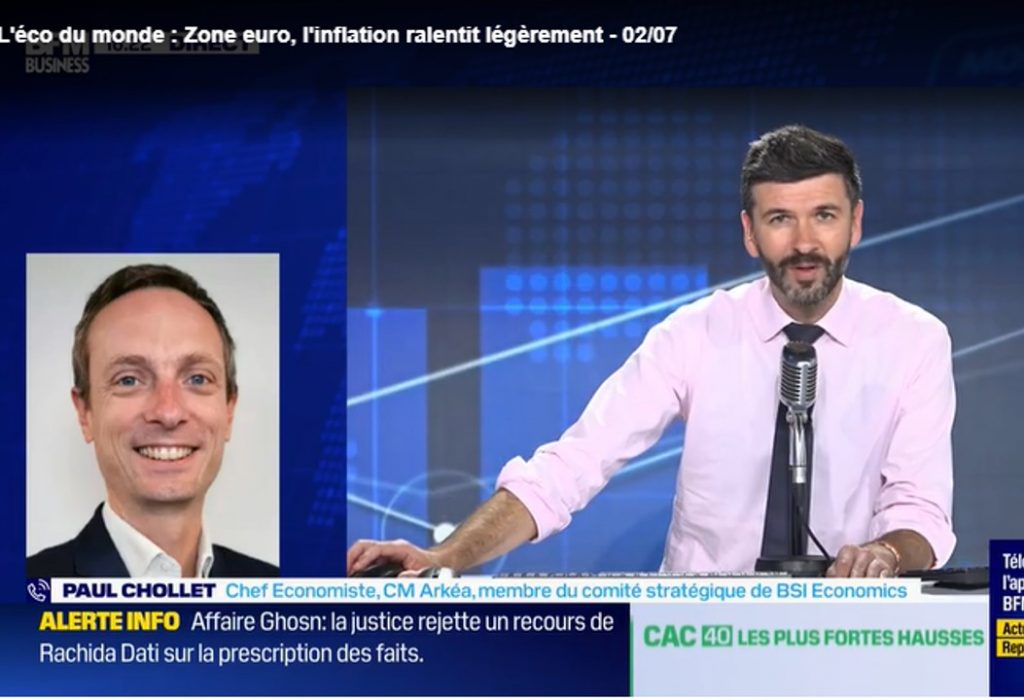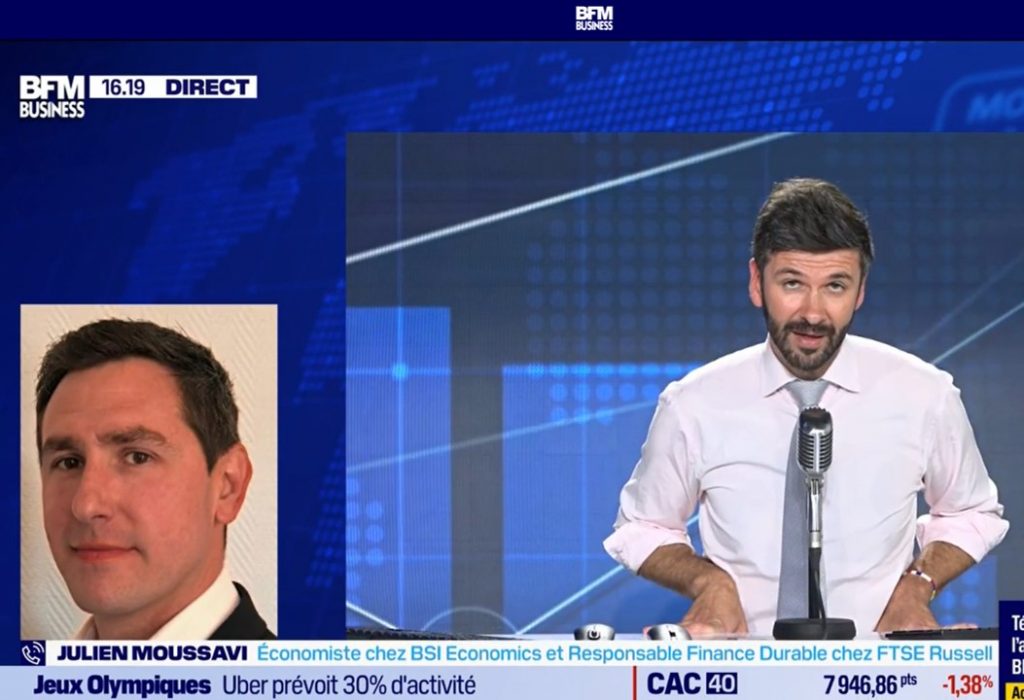Why rising income inequality may hurt aggregate activity: the role of the marginal propensity to consume
Summary:
– The marginal propensity to consume is a declining function of income.
– An increase in income inequality will therefore divert resources away from agents with a higher marginal propensity to consume towards those with a lower one.
– This will exert a drag on aggregate consumption and demand.
– Redistributive policies may counteract this effect, helping to stabilize aggregate activity.

Do changes in the income distribution matter for aggregate activity? This question has earned the attention of economists for a long time, and has gained considerable importance in the aftermath of the recent crisis, characterized by both high levels of inequality and low levels of economic activity. High levels of inequality may hinder aggregate activity through several channels, both on the supply and demand side.
On the supply side, it may prevent a significant fraction of the population from acquiring education, harming the accumulation of human capital. It may also give rise to social and political instability, decreasing businesses’ and households’ willingness to invest, compromising the accumulation of physical capital. On the demand side, increasing inequality may have a contractionary effect on aggregate consumption, if the consumption response to income changes is heterogeneous across consumers at different points of the income distribution. This article focuses on the last channel, explaining the rational behind it and presenting some evidence of its existence.
Why should one expect income inequality to affect aggregate consumption?
The idea that the income distribution may have a significant effect on effective demand is an old one, dating at least back to Keynes’s 1936 General Theory of Employment, Interest and Money, where he stated “If fiscal policy is used as a deliberate instrument for the more equal distribution of incomes, its effect in increasing the propensity to consume is, of course, all the greater”. The rational behind this statement is the existence of a heterogeneous marginal propensity to consume (MPC) across the income distribution and, more specifically, one that is declining with the level of income.
The MPC measures the proportion of a marginal increase in income that is channeled to additional consumption. It is measured as the ratio of the change in consumption to the change in income, thus giving a figure between 0 and 1 (or, equivalently, between 0% and 100%). One minus the MPC equals the marginal propensity to save (MPS).[1]
Should one expect the MPC to be the same for all consumers? It seems plausible to think that this should not be the case and that in fact the MPC should be a diminishing function of income, such that people at the lower end of the income distribution would have a higher MPC than those at the higher end (I present reasons of why this should be the case in the next section). Increases in income will lead to increases in consumption, but these increases will be smaller at higher levels of income.
What is then the link between the MPC, inequality and aggregate consumption? The answer is perhaps by now easier to anticipate. If MPCs are declining in income, then an increase in inequality will cause the overall propensity to consume of the economy to decrease, putting downward pressure on consumption and aggregate demand. To see this clearly, consider the following trivial example. Suppose that 1 euro gets transferred from a poor to a rich consumer, generating an increase in income inequality. If both agents have the same MPC, say MPCsame, this redistribution will have no effect on aggregate consumption. The poor will reduce her consumption by 1 euro x MPCsame and the rich will increase her consumption by exactly the same amount. The drop in consumption by the poor consumer will be exactly offset by the increase in consumption by the rich one, and aggregate consumption will stay unchanged. Now suppose that the MPC of the poorer agent, say MPCpoor, is higher than the MPC of the richer one, say MPCrich. Then, the reduction in consumption by the poorer consumer will be 1 euro x MPCpoor, which will be superior to the increase in consumption by the richer one, equal to 1 euro x MPCrich. Aggregate consumption will fall by an amount equal to the difference between the two.
We are now ready to understand the reasoning behind Keynes’s statement: if poorer individuals have a higher MPC than richer ones, then policies redistributing income towards the former and away from the latter (i.e., promoting a more equal distribution) will tend to increase the overall propensity to consume, stimulating aggregate consumption. Keynes refers in particular to fiscal policy, but one can naturally conclude that any type of redistributive policy could have this effect.
Why should the MPC be declining with income?
Why would the MPC be heterogeneous across consumers? And, in particular, why should it be declining with income? There are several theoretical reasons to expect this to be the case.
Firstly, many individuals are subject to borrowing (or liquidity) constraints, i.e. they have a limited access to credit. Since they cannot borrow easily, or can only do so at prohibitive interest rates, they are forced to set their consumption equal to their disposable income[2]. In this case, one extra euro will probably be used to a large extent to cover additional consumption needs that they are not able to finance. Unconstrained individuals, however, will be able to borrow against future income if they wish to consume more than their disposable income. Therefore, when given one extra euro, they will be more likely to save it or use it to pay down the debt they had previously contracted. As a result, the MPC will differ between the constrained and unconstrained individuals. Typically, constrained individuals will be more concentrated at the bottom of the income distribution, while unconstrained individuals will predominate at the top, which will determine higher (lower) levels of the MPC for consumers with lower (higher) levels of income.
Secondly, the amount of uncertainty faced by individuals may lead them to incur in precautionary saving. When faced with uncertainty about their future incomes, and in the presence of incomplete insurance markets (i.e. impossibility of insuring against all possible risks), individuals will use savings as a means to “self-insure” against some possible bad state of their future income flow. The amount of income that they save for this reason is denoted precautionary savings. Poorer households live on the edge of (precautionary) fear, and therefore have a stronger precautionary saving motive. Richer households, instead, believe that they are likely to have enough resources to face an unexpected negative income shock, and therefore incur less in precautionary saving. This means that current consumption will be more depressed at lower income levels, as individuals in this part of the income distribution will sacrifice relatively more their present consumption to save for a rainy day. They will therefore be more responsive to increases in current income. This will then entail higher (lower) levels of the MPC for consumers with lower (higher) levels of income.
Thirdly, individuals often save to be able to leave bequests to their descendants. This motive for saving will be higher for higher income individuals, who are more capable of building this legacy without affecting their consumption. In a way, one can think of bequests as a “luxury good”, for which demand increases more than proportionally as income rises. Hence, when faced with an income increase, richer individuals will be more likely to channel a part of it to build a stock of bequests than poorer individuals, who will be more focused on facing their current consumption needs than saving for their descendants. Once again, this will imply higher (lower) levels of the MPC for consumers with lower (higher) levels of income.
What is the empirical evidence on the heterogeneity of the MPC and its implications for aggregate consumption?
There is by now a significant literature devoted to the issue of the heterogeneity of the MPC along the income distribution and the effect of distributional changes on the behavior of aggregate consumption. Existing studies are quite diverse, differing with respect to both the methodological approach and the type of data that they use.
Macro-level approach
One set of studies uses a macro-level approach and typically directly assesses the effects of income inequality on aggregate consumption, either through simulated models or through, using cross-country data. For example, Brown (2004) finds that in a simulated model for the US, where current income imposes a hard constraint on spending, the income distribution can have very significant implications for effective demand. Specifically, he finds that a decrease of the Theil index (his selected measure of inequality) from 0.146 to zero would increase the ratio of aggregate consumption to aggregate income from 0.824 to 0.954, corresponding to an increase in spending of nearly 16%. Turning to an empirical approach, and using data from the Bureau of Labor Statistics for the US between 1967 and 2000, the author finds that consumption expenditure would have been 11.8% higher than it actually was in 1986 if there had not been an increase of 130% in the Theil index between 1967 and 1986.
Micro-level approach
Another set of studies has a more micro-level approach and typically estimates the heterogeneity in the MPC and then uses these estimates to infer about the implications of income inequality for aggregate consumption. Among these studies, one can distinguish between two types: those that rely on non-experimental data and those that explore quasi-experiments induced by one-off events.
Using non-experimental data
Starting with the first type of micro-level studies, a good example is the work by Dynan, Skinner and Zeldes (2004) who estimate the MPS (1-MPC) for all five quintiles of the income distribution in the US between 1984 and 1994. They find that the MPS of households in the first quintile is around 0.09 whereas the MPS of households in the fourth quintile is more than the double, equal to 0.2. Caroll, Slacalek and Tokuoka (2014) build a model with both permanent and transitory income shocks and calibrate it for fifteen European countries, using 2010 data. They too find that low-income households have a higher MPC. For example, considering the fifteen countries as a whole, they find estimates in the range of 0.12-0.27 for the bottom 50% and only in the range of 0.09-0.22 for the top 1% of the income distribution.
Using experimental data
The second type of micro-based studies often focus on either estimating responses to temporary income shocks from the data or using households’ answers to surveys directly asking how they would react in the face of these shocks. Broda and Parker (2014) estimate households’ consumption spending responses to the Economic Stimulus Payments of 2008 in the US. They find that in the month of payment, the MPC of the bottom income group is roughly double of that of the middle and top income groups. Johnson et al. (2006) and Johnson et al. (2013) also focus on the consumption response to extraordinary stimulus payments, occurred in 2001 and 2008 respectively. They make use of questions expressly added to the Consumer Expenditure Survey, exploiting the random variation in the timing of the receipt. They too find positive and significant impacts and that the estimated spending responses are largest for low-income households.
Jappelli and Pistaferri (2014) use information on how much consumers would spend of an unexpected gain equal to their average monthly income, obtained from a unique question in the 2010 Italian Survey of Income and Wealth. They find that households with low cash-on-hand the sum of household disposable income and financial wealth, net of consumer debt) exhibit a much higher MPC than affluent households. Figure 1 provides descriptive evidence on this relationship showing that the MPC declines sharply with cash-on-hand, from about 65 percent in the lowest percentile to some 30 percent for the richest households. The authors also perform a regression analysis, finding MPCs going from around 0.29 for the lowest quintile to around 0.06 for the highest one. Furthermore, they assess the effect on aggregate consumption of a series of fiscal policies. For e.g., they consider a balanced-budget redistributive policy whereby the government finances a transfer to the bottom x% of the income distribution, with 1 ≤ x ≤ 89, by taxing the top 10% by an amount equal to 1% of national disposable income. Results are presented in the red line in Figure 2[3]. It shows that the effect is positive and highest if the program targets the very poor. For instance, if the transfer went to the bottom 10% of the distribution it would raise aggregate consumption by 0.33%.
Figure 1: MPC as a decreasing function of income


Sources: Jappelli and Pistaferri (2014), BSI Economics
Finally, Mian, Rao and Sufi (2013) study the MPC out of wealth shocks across the US population at the onset of the Great Recession, using data on automobile sales and MasterCard spending that enables them to explore cross-sectional variation at the ZIP code level. They find substantial evidence of MPC heterogeneity across the income distribution, with the MPC for households in ZIP codes with average income less than USD35,000 being almost three times as large as the one for households in ZIP codes with average income greater than USD200,000.
Figure 2: Effect of redistributive policy on aggregate consumption


Sources: Jappelli and Pistaferri (2014), BSI Economics
Overall, despite being based on distinct approaches and data and giving different quantitative results, all these studies provide evidence that:
(i) The MPC is a diminishing function of income;
(ii) Inequality developments may affect aggregate consumption;
(iii) Redistributive policies may be effective at stimulating consumption.
Conclusion
Understanding how changes in the income distribution may affect aggregate demand is crucial for the design of policies aimed at stimulating or stabilizing aggregate activity. One of the key channels behind this link is the well-documented fact that lower-income individuals have a higher MPC. This implies that an income transfer from someone at the bottom of the income distribution to someone at the top will have a depressive effect on aggregate consumption. An increase in income inequality may therefore exert a significant drag on aggregate demand. Redistributive policies, which transfer resources from low-MPC to high-MPC households, may then be effective at stimulating aggregate activity, and should become an integrant part of the macroeconomist’s policy toolbox.
References
– Broda and Parker (2014),“The economic stimulus payments of 2008 and the aggregate demand for consumption”, Journal of Monetary Economics, Vol. 68
– Brown (2004),“Does income distribution matter for effective demand? Evidence from the United States”, Review of Political Economy, Vol. 16, No. 3
– Caroll, Slacalek andTokuoka (2014), “The distribution of wealth and the MPC: implications of new european data”, The American Economic Review, Vol. 104, Issue 5
– Dynan, Skinner and Zeldes (2004),“Do the rich save more”,Journal of Political Economy, Vol. 112, No.2
– Jappelli, Pistaferri (2014),“Fiscal policy and MPC heterogeneity”American Economic Journal: Macroeconomics Vol. 6, Issue 4
– Johnson, Parker and Souleles (2006), “Household expenditure and the income tax rebates of 2001”,The American Economic Review, Vol. 96, No. 5
– Johnson, Parker, Maclelland and Souleles (2013), “Consumer spending and the economic stimulus of 2008”,The American Economic Review, Vol. 103, No. 6
– Mian, Rao and Sufi (2013) “Household balance sheets, consumption and the economic slump”, Quarterly Journal of Economics, Vol. 128, Issue 4
– Pistaferri and Saporta-Eksten (2012), “Changes in the income distribution and aggregate consumption”, Italian Ministry of Economy and Finance, Department of the Treasury Working Paper No. 11
Notes:
[1] For example, suppose an individual receives a raise of 100 euros and decides to consume 70 of those extra euros and save the other 30. Then, her MPC is 70/100=0,7=70% and her MPS is 1-0,7=0,3=30%.
[2] Disposable income is equal to total personal market income plus government transfers minus income taxes.
[3] The other lines correspond to similar, but slightly different, experiments.






















